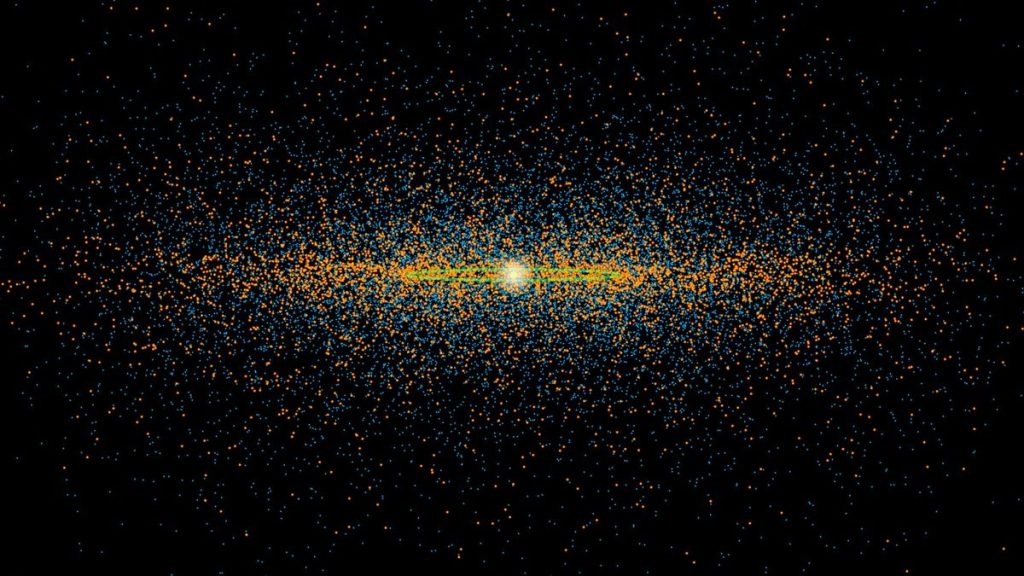A mysterious, nearly invisible object called “Dark.” Comet“It may pose a bigger threat to Earth than scientists thought,” new research suggests.
These small, rapidly spinning objects likely migrate from farther away and wander close to Earth. Solar SystemThese can be sources of water and other volatile elements and can also be powerful sources of hazards.
Usually, comets asteroidComets come from the outermost regions of the solar system, where temperatures are cold enough for molecules like water to freeze. They usually follow stable orbits, but gravitational interactions with the giant planets can disrupt their paths and send some of the icy rocks spiraling toward the inner regions. Solar SystemIf that happens, the heat of the sun will cause it to disintegrate and turn into a comet. Signature Tail.
Asteroids, on the other hand, usually reside in the inner solar system, between Mars and Jupiter. They are rockier than their cometary cousins, which allows them to survive longer in the sun’s glare. But asteroids also sometimes fall into unstable orbits, causing them to collapse. Dangerously close to Earth.
But there’s a strange third type of space rock that astronomers have only recently begun to identify: dark comets, which look like both asteroids and comets. Approved for publication in the magazine “Icarus”A team of astronomers set out to unravel the mysterious origins of the dark comet.
Dark comets are small, only a few tens of kilometers in diameter. They show no visible outgassing or evaporation of volatile elements such as water, but they also do not move in perfect orbits. Instead, they show evidence of “non-gravitational” acceleration, suggesting there are other forces that can slowly move them in their orbits.
All small objects in the solar system, including asteroids, have some degree of non-gravitational acceleration, but astronomers can usually identify its cause: asteroids, for example, are heated unevenly by the Sun, which causes small but measurable shifts in their orbits.
The researchers found that the dark comet’s non-gravitational acceleration is inconsistent with uneven heating, so there must be another cause for its acceleration. The team believes that the dark comet is indeed expelling gas, which could be causing its own non-gravitational acceleration, albeit at undetectable levels.
Dark comets also rotate very fast, which means they should have enough internal strength to not break up, leading the researchers to conclude that they have a similar composition to asteroids and are probably the result of a larger object breaking up.
Based on this evidence, the researchers believe that dark comets likely originate in the asteroid belt between Mars and Jupiter and are being disrupted in their orbits by gravitational interactions. SaturnDark comets are likely asteroids, but they have a strange property: They contain unusually high amounts of light molecules like water, which could evaporate if they enter the inner solar system, leading researchers to suggest that dark comets could be candidates for how Earth got its early water.
Meanwhile, dark comets’ erratic orbits, combined with their unlikely properties, make them particularly dangerous as near-Earth objects: They’re small, fast, and hard to spot. Most importantly, they don’t behave like more familiar asteroids and comets, and they’re unpredictable, the researchers found.
in order to help Protecting the Earth from potential threatsFurther detailed study is needed to more accurately detect irregular objects such as dark comets and predict their future movements.


